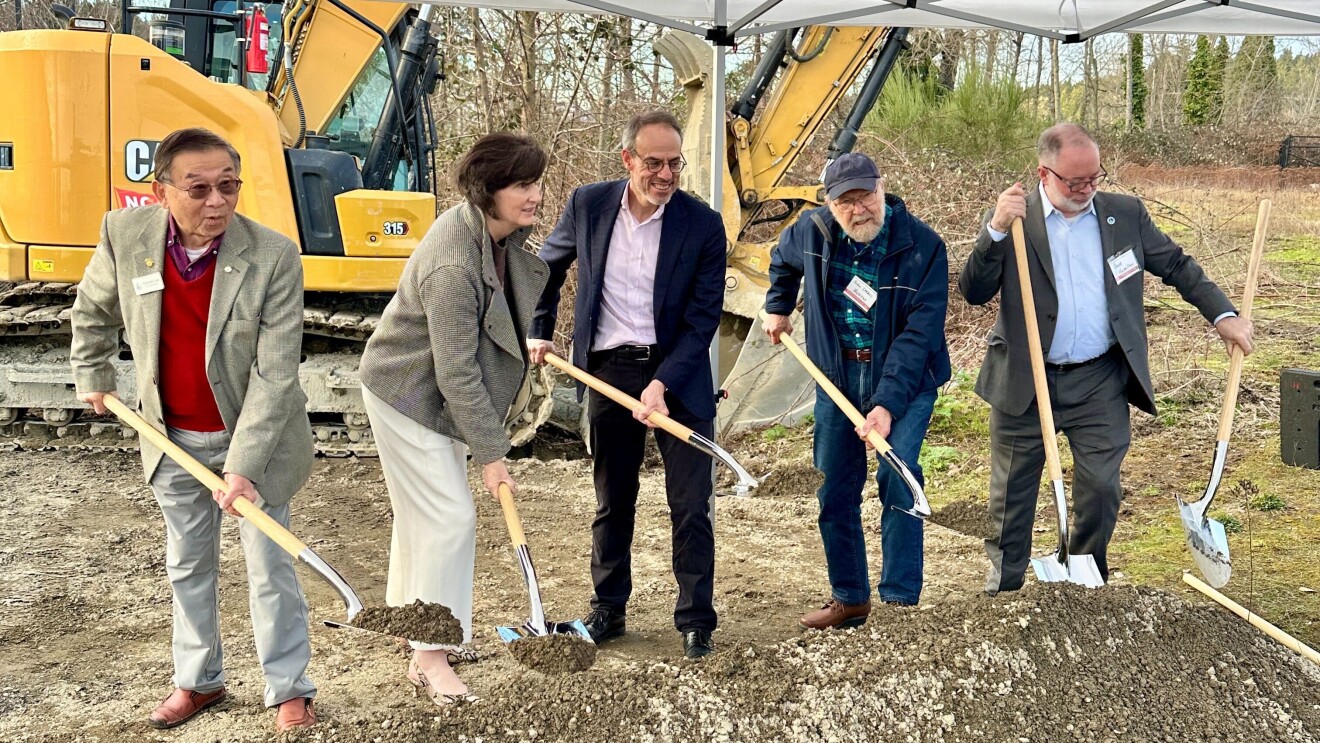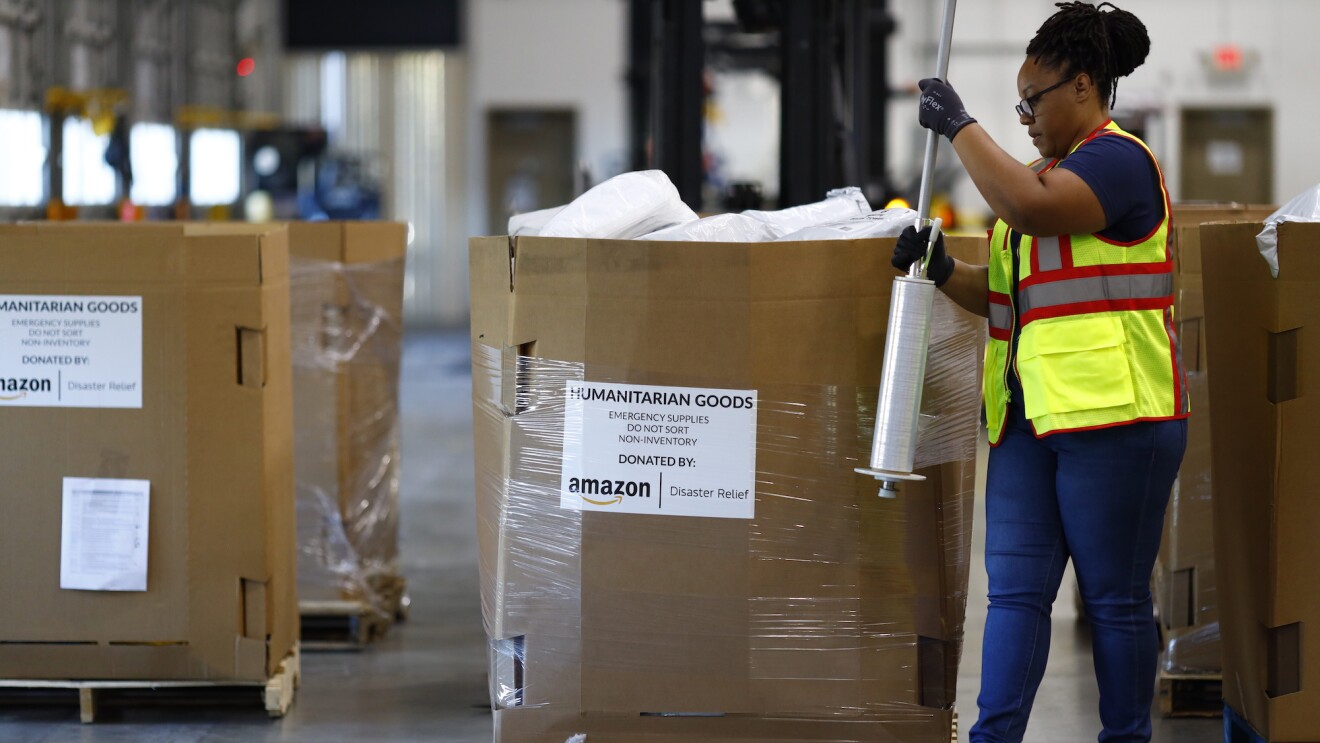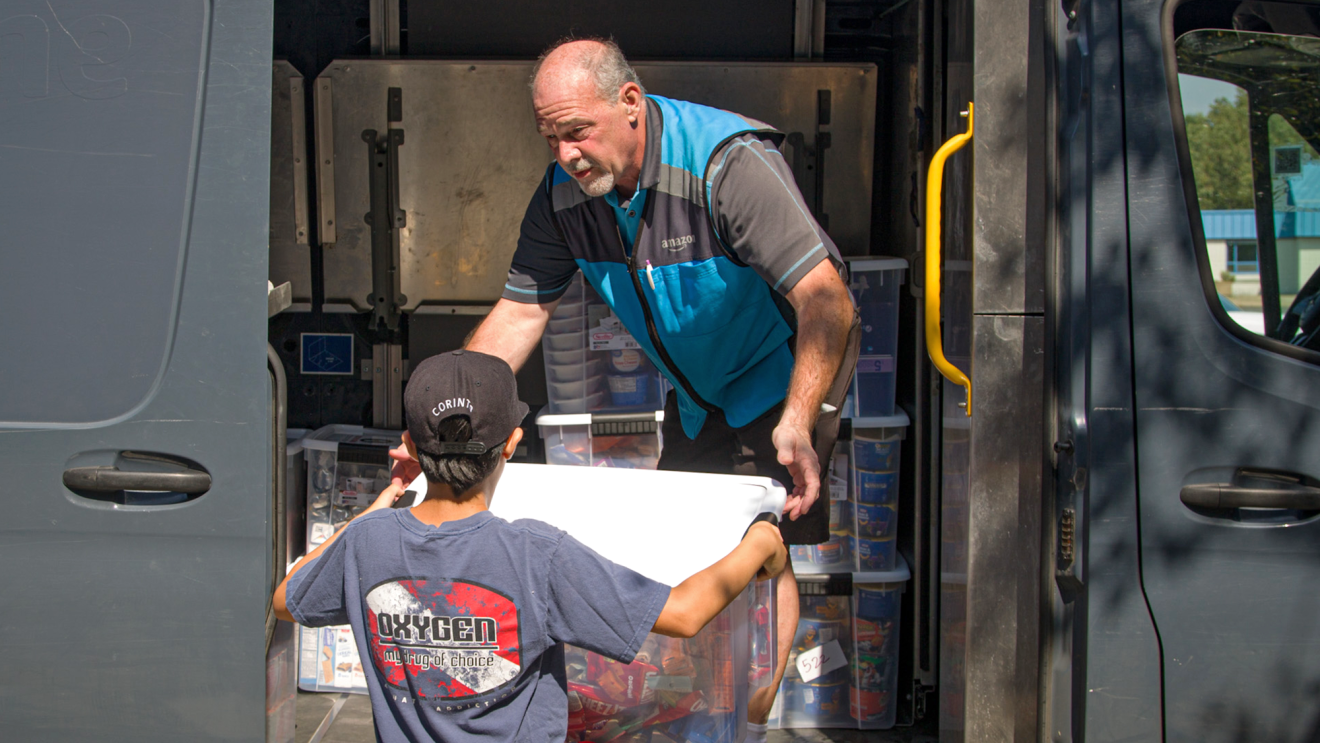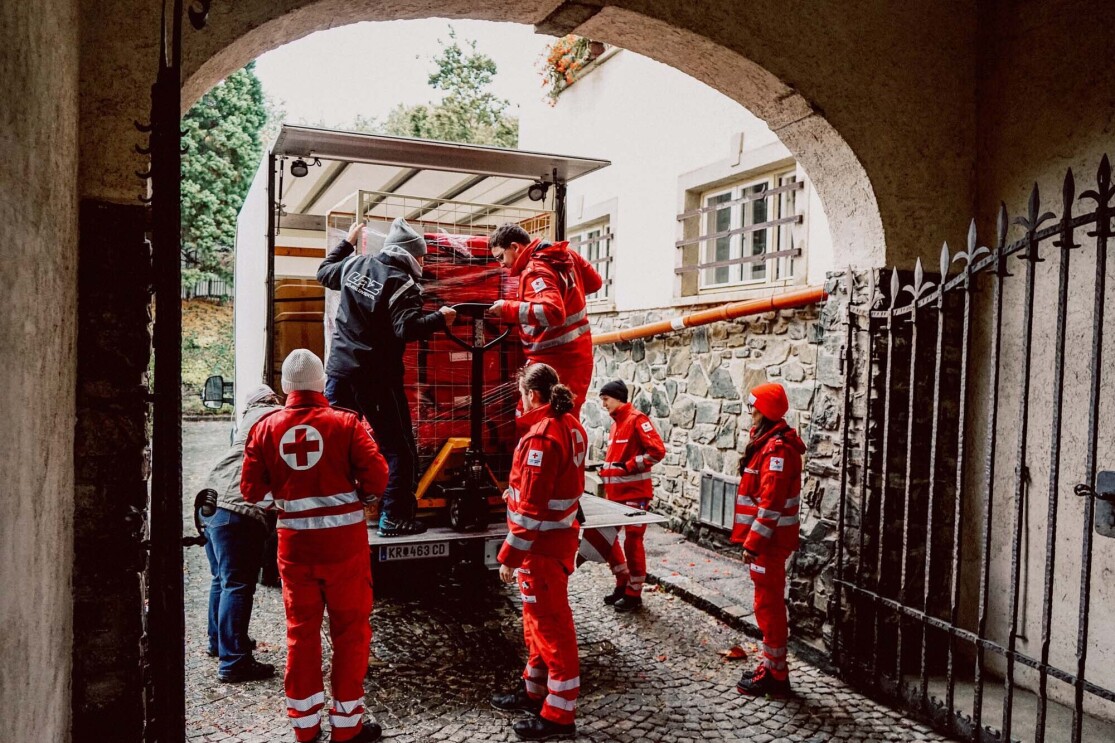When Hurricane Dorian struck the Bahamas with stronger force than any storm since 1851, Abe Diaz and his teammates kicked into high gear. The islands were reeling, the death toll was rising, and first responders on the ground were calling out for donated supplies.
The situation was all too familiar to Diaz. About two years before, Hurricane Maria had struck his homeland of Puerto Rico. He was working on Amazon’s Prime Video team in Seattle, and his family was still living on the devastated island. Power was out, phones weren’t working, and roads were impassable. When Amazon assembled a disaster response team, Diaz jumped at the chance to help.
That September, Amazon’s first-ever plane full of donated relief supplies landed in Puerto Rico. Diaz later made the switch from volunteer to full-time staff, becoming the senior technical program manager for the Disaster Relief team.
01 / 04
Logistics of relief
With Dorian spinning away and partner agencies such as the Red Cross requesting a range of supplies, it was time for Diaz and the team to apply the lessons they’d learned over two years of relief work. Disaster Relief sent two Amazon Air cargo planes to the Bahamas full of tens of thousands of relief items.
Getting a plane into a disaster zone takes a lot of complex logistics, and yet vital information might be missing. The team has to start working with what they have, setting up the pieces they can and going forward step-by-step from there.
There were a lot of critical pieces for that operation that were unknown for the Amazon team, Diaz said of the Dorian effort. “We didn’t know what airport we’d be leaving from because it might depend on where inventory is. We didn’t know what airport we were going to be landing at because they might be flooded.”
One of the first steps was finding the products to include in a shipment that must include only things that Amazon’s relief partners have asked for.
We look at how we can uniquely help. How can we apply what Amazon has already built for our regular business, but use it for disaster relief?
Trang-Thien Tran, Disaster Relief
Amazon works with organizations like the Red Cross, Save the Children, and Mercy Corps, responding to their immediate needs. Those needs range from tents and tarps to pliers, gloves, and trash cans. Sending only those things agencies request is the most effective way to help in an emergency, according to experts at the U.S. Agency for International Development. Relief agencies have used the term “the second disaster” to describe the flood of unneeded donations that they often have to manage in the wake of a natural disaster.
“We form relationships with disaster-relief nonprofits, and we ask them, ‘What do you need? What’s the challenge or gap?’” said Trang-Thien Tran, principal product manager for Disaster Relief. “We look at how we can uniquely help. How can we apply what Amazon has already built for our regular business, but use it for disaster relief? We are able to leverage all of Amazon’s products and services.”
After identifying and locating the necessary supplies, Amazon’s disaster relief team has the logistical challenge of figuring out how to package or consolidate the items for the flight. This requires getting things into large corrugated boxes instead of using pallets, as is usual for Amazon’s truck-based hauling operations.
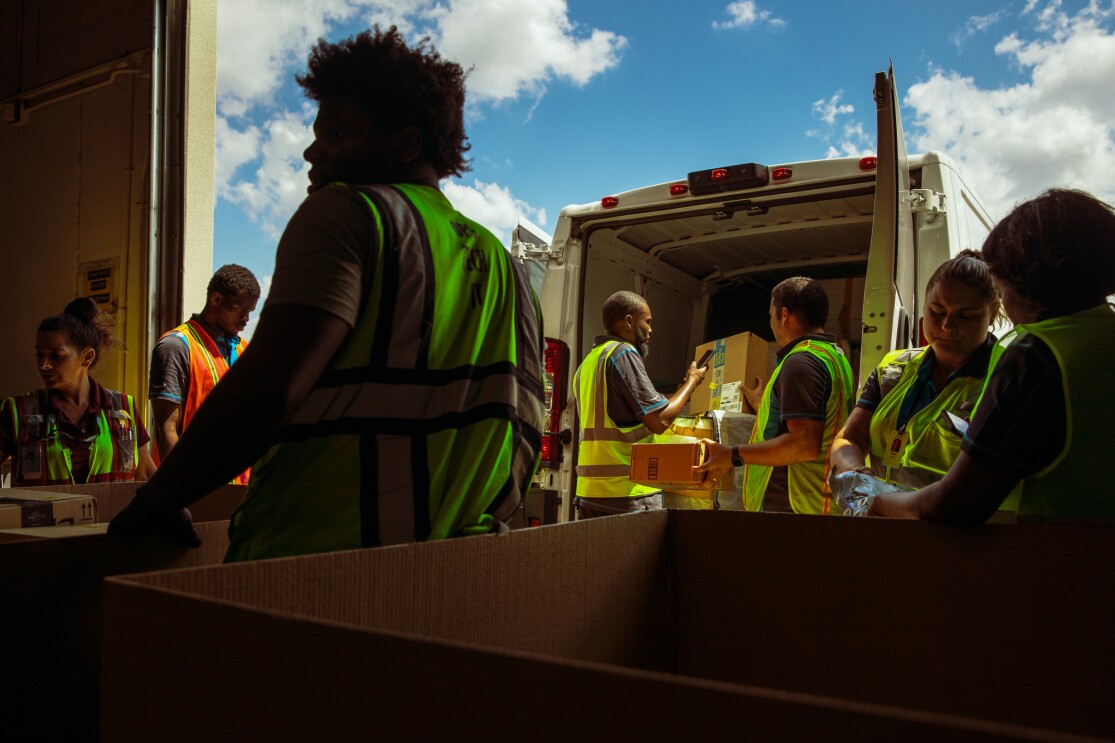 The skies were clear and sunny at Amazon's TPA2 fulfillment center in Lakeland, Florida while associates unloaded the disaster-relief supplies flowing in from Amazon locations around the U.S. following Hurricane Dorian in 2019. As a precaution, the same facility had closed down when the storm was still gathering strength in the Atlantic and forecasters feared it might hit the Tampa area.Photo by JORDAN STEAD
The skies were clear and sunny at Amazon's TPA2 fulfillment center in Lakeland, Florida while associates unloaded the disaster-relief supplies flowing in from Amazon locations around the U.S. following Hurricane Dorian in 2019. As a precaution, the same facility had closed down when the storm was still gathering strength in the Atlantic and forecasters feared it might hit the Tampa area.Photo by JORDAN STEADThe next puzzle is coordinating how to fly into places that might have compromised communications and infrastructure. Doing so involves networking extensively with groups and agencies on the ground, including FEMA and local institutions. The final piece is figuring out how to get the supplies from the landing location to the agencies that need it, which means working with local partners who have that capability.
Working backwards
The story of how a plane full of badly needed supplies arrived in the Bahamas on Monday, September 16, starts with Bettina Stix, senior manager of community engagement at Amazon, who was already a veteran Amazon employee when a devastating Indian Ocean earthquake and tsunami hit Indonesia in December of 2004.
She watched as some of Amazon’s software engineers figured out how to create a donate button on the Amazon.com website that customers could use to send cash to help relief efforts. The donation project quickly became an international initiative within Amazon that raised $15 million to help the Red Cross serve victims of the tsunami.
“That left an impression,” Stix remembered. “It left the impression that there are many more ways to make a difference than being search and rescue. I thought, ‘We can do so much more than just collecting cash. We could put our logistics and our technology to use.’”
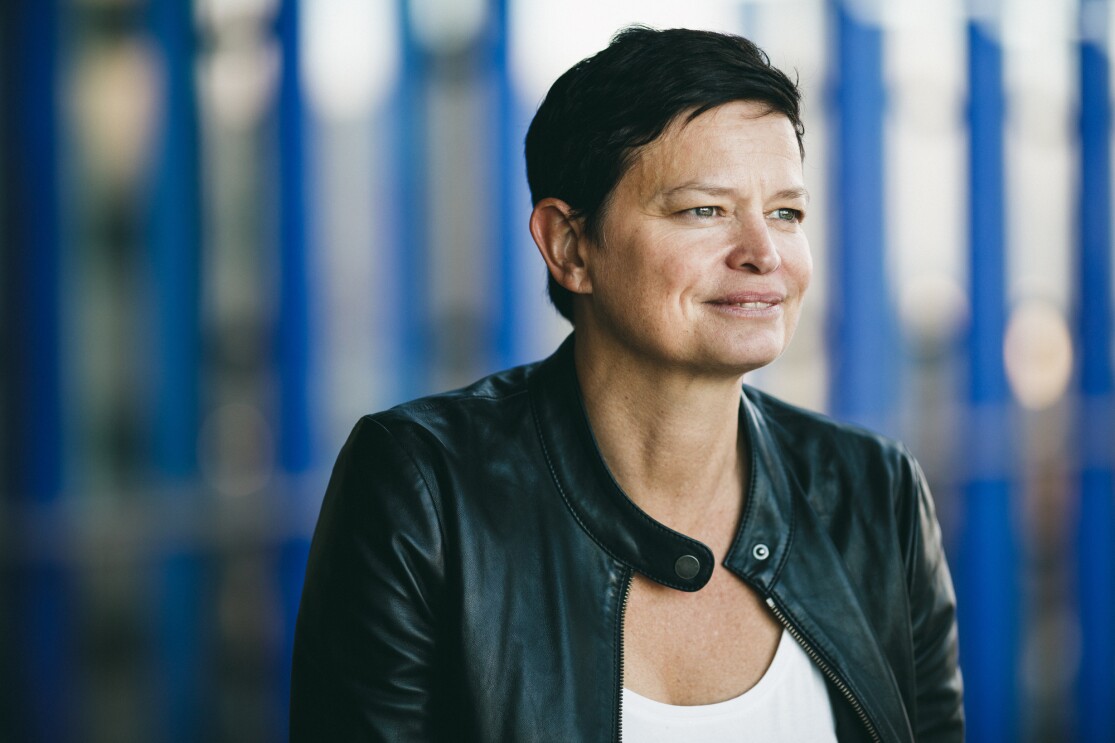 Amazonian Bettina Stix, who proposed the idea of an Amazon team to tap into the company's logistics expertise and deliver disaster relief to areas of need around the world. Today she leads Disaster Relief.Photo by JORDAN STEAD
Amazonian Bettina Stix, who proposed the idea of an Amazon team to tap into the company's logistics expertise and deliver disaster relief to areas of need around the world. Today she leads Disaster Relief.Photo by JORDAN STEADShe wrote a “Working Backwards” document. That’s a process Amazon uses to ensure a project begins with the customer in mind first – from envisioning how to delight or serve customers, then clarifying the idea through an imagined press release and by answering a set of frequently asked questions about the proposal. Stix envisioned a program that would leverage Amazon’s capabilities around the world to provide relief supplies to first-responder partners.
The prospect generated widespread enthusiasm among Amazon staff, and soon leadership had given Stix the green light to recruit a few other Amazon employees for a Disaster Relief team. Almost as soon as the group was in place in 2017, Hurricane Harvey caused massive flooding in Houston, sending people scrambling to their rooftops to await rescue as waters rose.
The Red Cross had set up a shelter in the city’s George Brown Convention Center, and Amazon sent its first truck into the disaster zone with snacks and water for those congregated there. The Coast Guard and others who were rescuing people in boats needed supplies as well, and the disaster relief team arranged for them to pick up donated life vests from Amazon’s fulfillment center in Dallas.
The idea that Stix presented in her working backwards document had come to life. Amazon, its employees, and its customers have donated products and cash equal to more than $15 million to help with 25 disasters around the world. In the first half of 2019 alone, the company distributed more than 400,000 relief items to the communities affected by several natural disasters and storm events: cyclones in Indonesia and Mozambique, snowstorms in Seattle, tornadoes in Georgia and Alabama, and flooding in Ottawa, Canada.
On the ground
The Disaster Relief team also sends people into the field to establish temporary pick-up locations that Amazon can set up quickly in areas where the company’s usual delivery services have been suspended. When Florence hit, a “Go Team” headed for the disaster area and the first such spot in a North Carolina Whole Foods Market parking lot. Amazon’s website directed customers in given ZIP codes to pick up their orders at the location.
What the Go Team hadn’t anticipated was how useful the location would become for the emergency responders—both organizations that needed a place to receive supply shipments and out-of-town volunteers in search of various items.
“Our first customer during Florence was a Red Cross volunteer who needed a hammer and another set of tools,” recalled Ash Brown, the Rocky Mountain regional operations manager for Amazon Hub and Locker+ and the leader of the team of volunteers that set up the first pop-up location. “Our second customer was from FEMA, needing a resupply of specialized clothing. We didn’t expect how useful our presence on the ground would be to these other customers.”
The team plans to replicate the pop-up pick-up location where possible in the wake of future disasters.
01 / 12
True partnership
The nature and scale of Amazon’s relief efforts reflect the company’s unique capabilities as a global distributor of an extensive range of items.
“We can help with items that many other donors can’t provide,” said Stix. For example, after wildfires ravaged homes In Northern California, Amazon was able to fulfill relief agencies’ request for Goldrush Sifters—mini sieves to help people find valuables among the ashes.
The ability to satisfy real needs in specific ways comes back to working in deep partnership with relief organizations in order to complement and support, rather than preempt or replicating their work.
“The way we partner with Amazon makes the best use of each of our competencies with an end result of helping the most people possible,” said Jeanne-Aimee De Marrais, senior advisor on U.S. emergencies for Save the Children.
Her colleague Dawn Nunn, director of gift-in-kind agrees: “Amazon’s ability to move quickly and with agility to solve business problems has been a huge benefit of working together. They have helped us develop and expand our in-kind strategies using their core competencies of speed, reach, and superior logistics systems.”
For the Hurricane Dorian response, Amazon and customers across the United States donated cash and more than 400,000 relief items worth $1 million. Those items, which included cleanup kits, toothbrushes, toothpaste, clothing, food items, and recovery materials (tarps, ropes, solar lanterns), were shipped to Amazon fulfillment centers in Florida, where they were transported to the Tampa air gateway and loaded on to Amazon Air planes bound for Nassau and Freeport. Amazon’s nonprofit partners—the International Federation of Red Cross and Red Crescent Societies, Mercy Corps, and the Grand Bahama Disaster Relief Foundation—distributed the supplies to those in need.
After the success of each response, Amazon disaster teams meet to regroup and get ready for the next one. Because there will always be a next one, and job No. 1 is to be poised to act immediately when a natural disaster or other devastating event hits a community where Amazon customers, employees, and their families live and work.
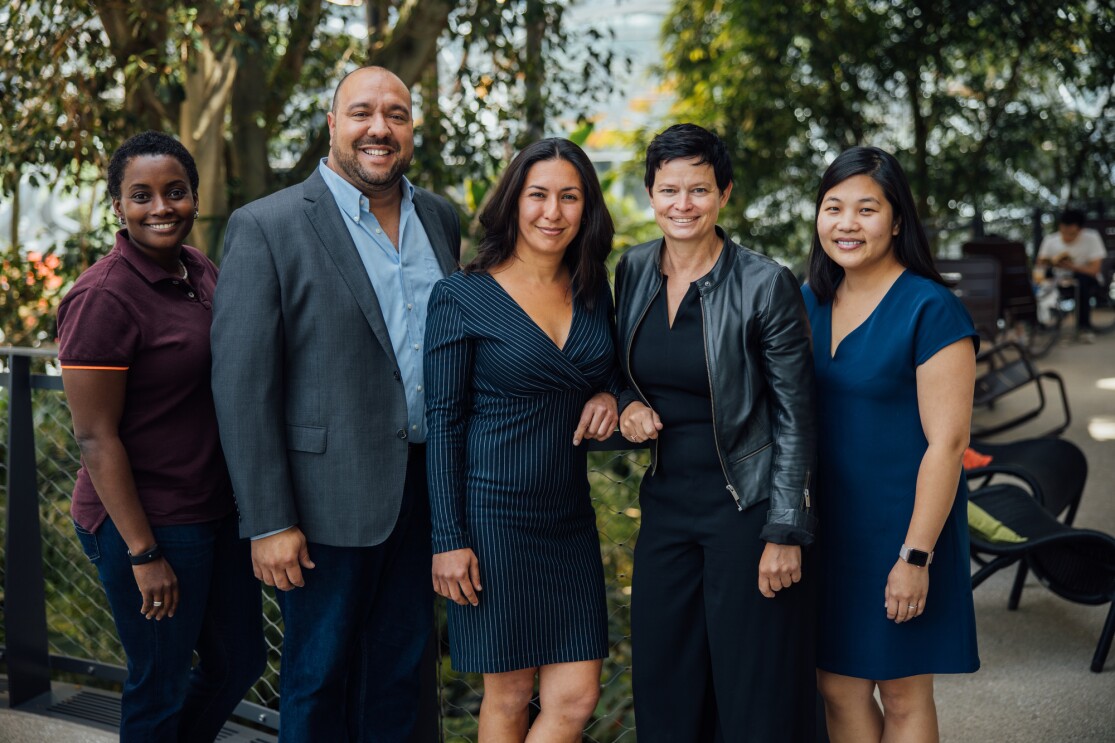 The Disaster Relief team, (left to right) Sam Porter, Abe Diaz, Seema Ramchandani, Bettina Stix, and Trang-Thien Tran.
The Disaster Relief team, (left to right) Sam Porter, Abe Diaz, Seema Ramchandani, Bettina Stix, and Trang-Thien Tran. The American Red Cross name, emblems, and copyrighted materials are used with its permission, which in no way constitutes an endorsement, express or implied, of any product, service, company, opinion or political position. The American Red Cross logo is a registered trademark owned by the American National Red Cross.

















